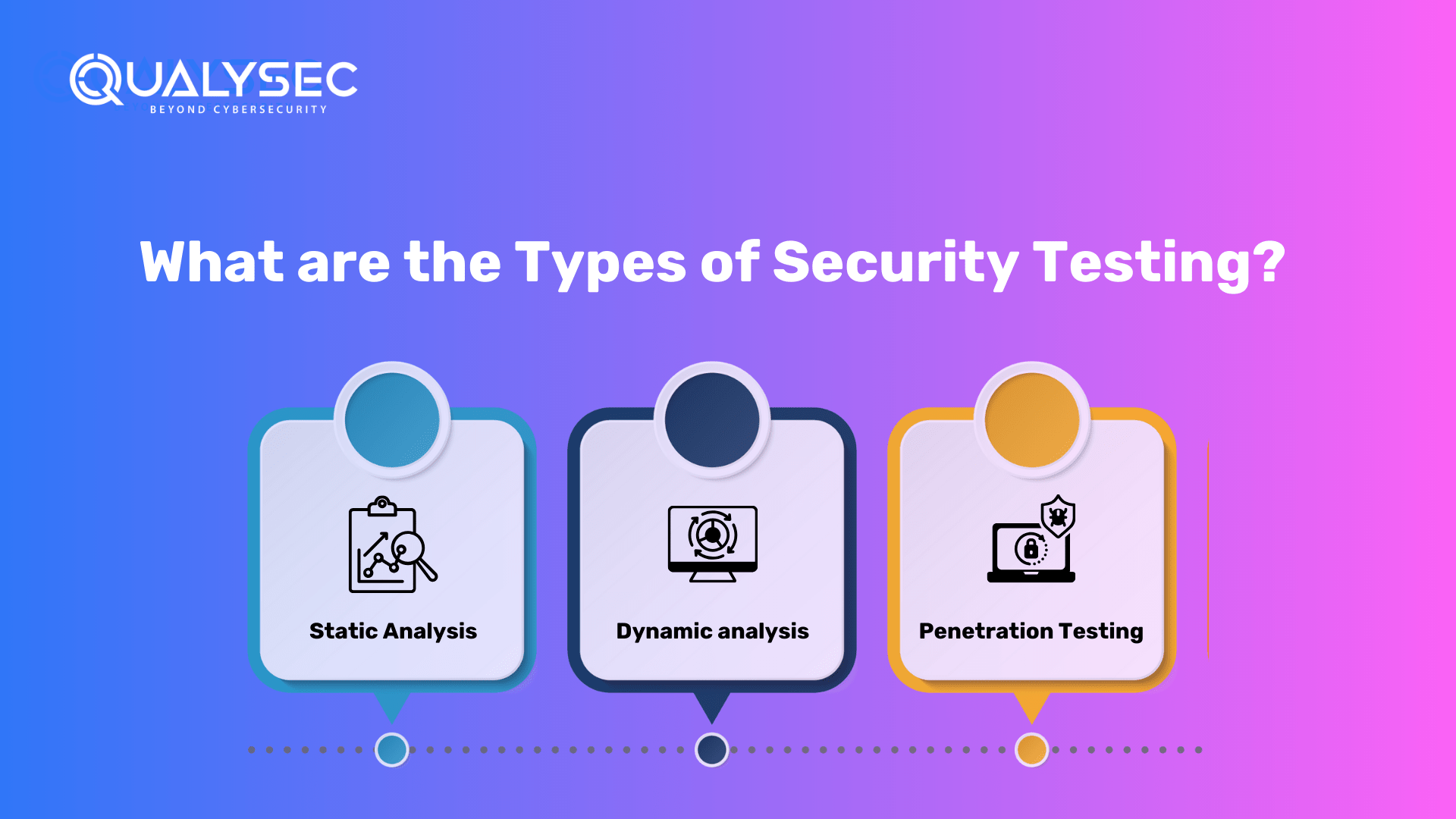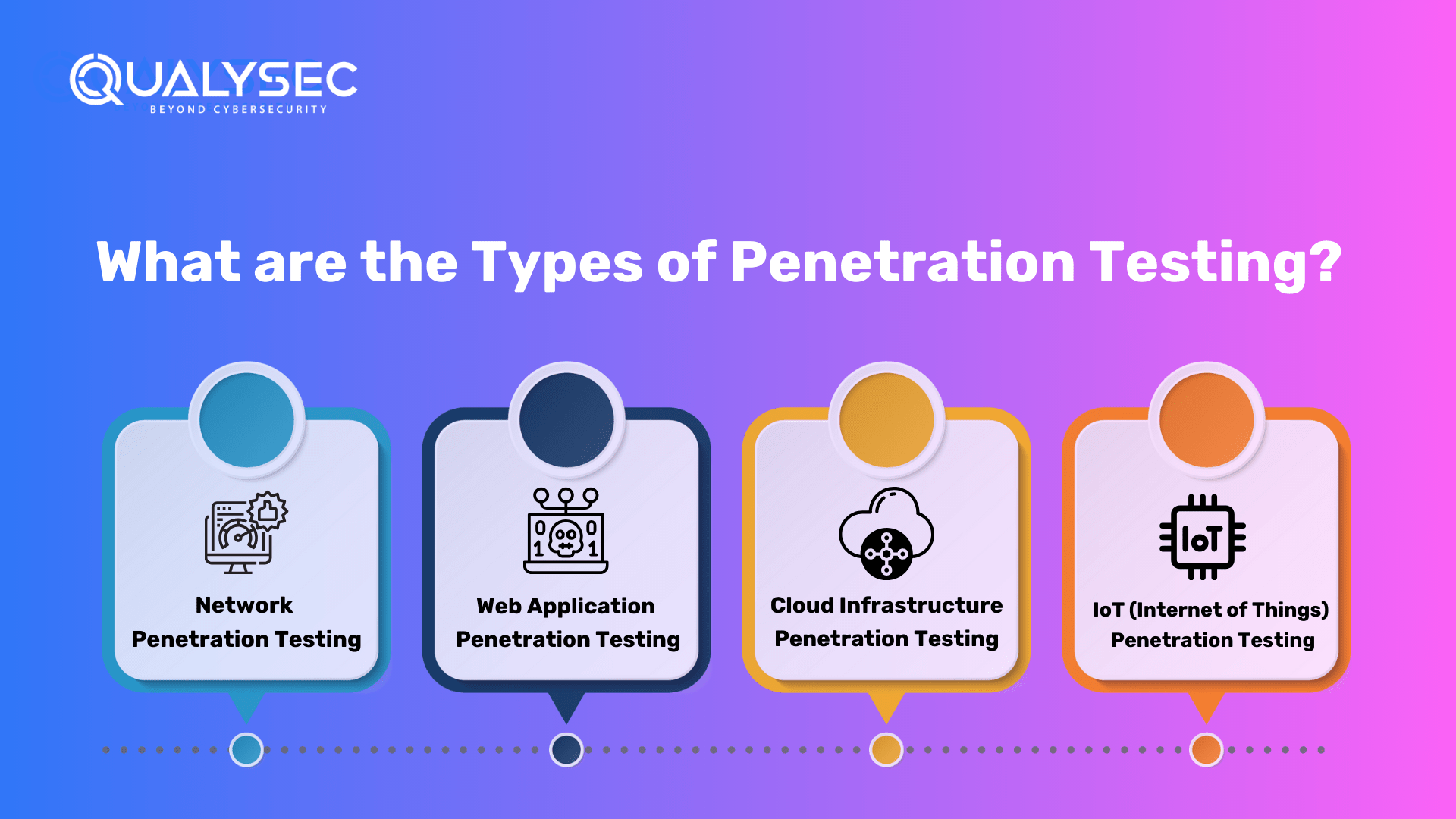Cybersecurity testing is the first line of protection against ever-changing digital threats. It refers to a set of approaches and procedures used to assess the resilience of systems, applications, and networks to possible cyber assaults.
This testing is a preventative approach for identifying and mitigating vulnerabilities and guaranteeing the integrity and security of digital infrastructure. Cybersecurity testing encompasses a variety of methodologies, including security testing and penetration testing, both of which are critical for maintaining solid security safeguards.
Understanding the differences between security testing vs penetration testing is critical to understanding their respective aims and approaches. While both attempts to strengthen security, their scope aims, and techniques differ greatly.
This article will examine the subtle differences between security testing and penetration testing. It will thoroughly emphasize their distinct traits, approaches, goals, and applications. Let’s start without further ado.
Talk to our Cybersecurity Expert to discuss your specific needs and how we can help your business.
Understanding Security Testing
What is Security Testing?
Security testing is a procedure that identifies vulnerabilities in a system or application in order to guarantee that it is secure against potential attackers. The primary goal is to uncover security flaws in the system before malevolent actors exploit them.
What is the Goal of Security Testing?
Security testing strives to eliminate risks, safeguard sensitive data, and strengthen the entire security framework by methodically examining infrastructure, software, or applications. It employs a variety of approaches and technologies to evaluate the system’s vulnerabilities and shortcomings.
What are the Types of Security Testing?
Here are some of the types you should know about:

- Static Analysis: This approach entails inspecting the code or program without running it. It examines the source code for potential vulnerabilities. Static analysis tools such as SonarQube, Veracode, and Checkmarx are often utilized.
- Dynamic analysis: This includes running the program to uncover vulnerabilities while it is in use. It evaluates how the system responds to various inputs and scenarios. Dynamic analysis is aided by tools like Burp Suite, OWASP ZAP, and Metasploit.
- Penetration Testing: Though it is sometimes classified individually, penetration testing is a component of security testing. It entails simulating cyber assaults in order to uncover exploitable flaws. This approach combines automated tools with manual testing.
Tools and Approached Used:
In security testing, companies use many approaches and technologies:
- Vulnerability Scanners: Tools such as Nessus, OpenVAS, and Qualys scan systems for known flaws.
- Ethical hacking: This entails hiring trained ethical hackers who apply their abilities to identify possible system flaws.
- Risk Assessment: Identifying and prioritizing possible hazards associated with vulnerabilities.
- Security Auditing: These are periodic reviews to ensure that security measures are current and effective.
Demystifying Penetration Testing
What is Penetration Testing?
Penetration testing, often known as ethical hacking, simulates actual cyber assaults on a system, network, or application. The primary goal is to uncover security flaws before malevolent hackers may exploit them. Its goal is to examine an organization’s security posture and give insights into possible threats, allowing for the installation of effective security solutions.
What are the Types of Penetration Testing?
Here are a few examples of the types of pen testing:

- Network Penetration Testing: Looks for flaws in network infrastructure such as servers, routers, and switches.
- Web Application Penetration Testing: Examines web application vulnerabilities such as SQL injection, cross-site scripting (XSS), and other web-based concerns.
- Cloud Infrastructure Penetration Testing: This type of testing focuses on discovering security weaknesses in cloud-based systems, as well as investigating configurations and probable misconfigurations in cloud services.
- IoT (Internet of Things) Penetration Testing: This type of testing, identifies vulnerabilities inside IoT devices and the associated network, with an emphasis on smart device security.
Tools and Approaches Used:
The methodologies used for penetration testing:
Black-box Testing: This happens when testers have no prior knowledge of the internal workings or architecture of the system. It imitates an external hacker’s attack.
White-box Testing: Testers understand the whole system, including its architecture and source code. It enables a more extensive and detailed evaluation.
Grey-box Testing: This occurs when testers only have a limited understanding of the system. They may have some knowledge of the system’s internal workings, allowing for a semi-informed approach to testing.
Click here to safeguard your company infrastructure and digital assets.
Security Testing Vs Penetration Testing: The Key Differences
Here are the major differences between security testing vs penetration testing to look out for:
| Differences | Security Testing | Penetration Testing |
| Scope | To guarantee a wide security overview, a comprehensive assessment of system components such as code, infrastructure, configurations, and compliance with security standards is performed. | The assessment focused largely on detecting and exploiting particular system vulnerabilities, allowing for a deeper dig into selected flaws. |
| Objectives | Aims to discover flaws, ensure compliance, and improve overall security posture by addressing vulnerabilities holistically. | Simulates real-world assaults to put defenses to the test, detecting vulnerabilities and assessing the system’s resistance to various threat scenarios, with an emphasis on specific risks. |
| Methodologies | To cover a wide range of potential vulnerabilities, multiple testing methodologies such as static analysis, dynamic analysis, risk assessments, compliance checks, and audits are used. | Relies on simulated assaults to exploit vulnerabilities and acquire unauthorized access, with the goal of doing a targeted investigation of specific problems. |
| Depth of Assessment | Provides a comprehensive, although sometimes less in-depth, examination of a wide variety of vulnerabilities and security elements within the scope of the system. | This investigation is more concentrated and in-depth, perhaps delving deeper into specific vulnerabilities uncovered during testing to determine their effect. |
| Timing & Frequency | To maintain continual security measures, it is frequently done on a regular, periodic, or as part of the development life cycle. | Target possible vulnerabilities, this is usually done at regular intervals, in response to changes, or as a reaction to perceived dangers or security incidents. |
| Approach | Proactively discovers and resolves vulnerabilities in order to prevent possible threats from being exploited, with an emphasis on proactive measures for overall system protection. | Focuses on particular situations and takes a more reactive approach, simulating genuine attacks to measure the system’s reflexes and endurance against real threats. |
| Skill Requirement | For a thorough examination, a diversified skill set covering numerous testing tools, programming languages, compliance requirements, and risk analysis is required. | To properly mimic assaults, specialist experience in ethical hacking, exploit methodology, security procedures, and an in-depth grasp of offensive security measures are required. |
| Reporting Emphasis | Comprehensive reporting is emphasized, with emphasis on detected vulnerabilities, compliance status, and recommendations for strengthening overall security measures. | Detailed documentation of exploited vulnerabilities, possible entry sites for attackers, and recommendations to harden defenses against specific threats found during testing are the focus of this course. |
| Legal & Ethical Implication | Adheres to legal and ethical standards, ensuring that testing is conducted within allowed limits and does not jeopardize system or data integrity. | A fine balance is required to guarantee that simulated assaults do not violate legal or ethical bounds and do not cause damage to systems or data while being tested. |
| Overall Focus | Focuses on a comprehensive security strategy, with the goal of achieving system-wide security oversight, compliance, and risk reduction across the enterprise. | Targets particular, identifiable risks while finding and resolving specific weaknesses to enhance defenses against potential targeted attacks or breaches. |
How Does Penetration Testing Work?
Here’s a step-by-step guide to learn how penetration works. We’ve covered the entire process to ensure a smooth conversation and work:
1. Pre-Assessment
The testing team specifies the scope and objectives of the penetration test during the pre-assessment phase. They collaborate with the app’s owner or developer to understand the app’s goals, functions, and possible dangers. This step involves preparation and logistics, such as defining the testing environment, establishing rules of engagement, and getting any necessary approvals and credentials to execute the test.
2. Information Gathering
The testing company advocates taking a simplified method to begin the mobile app penetration testing procedure. Begin by using the supplied link to submit an inquiry, which will put you in touch with knowledgeable cybersecurity specialists.
They will walk you through the process of completing a pre-assessment questionnaire, which covers both technical and non-technical elements of your desired mobile application. Testers arrange a virtual presentation meeting to explain the evaluation approach, tools, timing, and expected expenses.
Following that, they set up the signing of a nondisclosure agreement (NDA) and service agreement to ensure strict data protection. Once all necessary information has been gathered, the penetration testing will begin, ensuring the security of your mobile app.
3. Penetration Testing
The testing team actively seeks to attack vulnerabilities and security flaws in the mobile app during the penetration testing process. This phase consists of a series of simulated assaults and evaluations to detect flaws. Testers can rate the app’s authentication procedures, data storage, data transport, session management, and connection with external services. Furthermore, source code analysis, dynamic analysis, reverse engineering, manual testing, and automation testing are all common penetration testing methodologies a tester uses.
4. Analysis
Assess severity of each findings individually, and those with higher ratings have a greater technical and commercial effect with fewer dependencies.
Likelihood Determination: The assessment team rates the likelihood of exploitation for each vulnerability based on the following factors:
Impact Analysis: The assessment team studies and assesses the impact of the exploit on the company and its customers in terms of confidentiality, integrity, and availability for each vulnerability that they need to exploit.
Severity Determination: The pen testing company gives severity ratings based on internal knowledge as well as widely used rating systems such as the Open Web Application Security Project (OWASP) and the Common Vulnerability Scoring System (CVSS). The severity of each discovery is determined independently of the severity of other findings. Vulnerabilities with a higher severity rating have a bigger technical and business effect and are less reliant on other flaws.
5. Reporting
Only if the security tester’s findings are properly recorded will they be useful to the customer. A good pentest report should include, but doesn’t limit to, the following information:
- A concise description
- A scope and context description (e.g., targeted systems)
- Techniques employed information sources (either supplied by the customer or uncovered during the pentest)
- Prioritized results (for example, vulnerabilities organized using the DREAD categorization)
- Comprehensive results tips for repairing each flaw
Get a sample report of penetration testing.
6. Remediation
The last stage is dealing with the identified vulnerabilities and shortcomings. The mobile app developer or owner implements the report’s recommendations and works on remediation measures to improve the app’s security. This step may also include retesting to ensure that the vulnerabilities are resolved and the app is more secure. The objective is to make the app less vulnerable to security risks while still protecting user data.
7. Consulting and Support
The testing team frequently gives a consultation call to ensure that found vulnerabilities are successfully remedied. During this session, the security specialists review the results and offer advice on how to address and resolve the issues. This hands-on support is crucial for your development team to implement the necessary modifications as quickly as possible.
8. Certification
Penetration testing companies provide a letter of attestation as well as a security certificate to ensure the security measures used. These documents confirm that your application has been thoroughly run through tests and that all relevant security measures are in place.
Here’s what you need to know about the certification.
Qualysec’s cloud pentest gives you results—no endless emails, no digging through PDFs, no guesswork.

What are the Obstacles in Security and Penetration Testing?
Conducting security and penetration testing has its own set of challenges. Here are some common roadblocks:
- System Complexity: Modern systems are sophisticate and multidimensional, frequently consisting of multiple interrelated components, making it difficult to thoroughly test all parts. With cloud-based, IoT, and hybrid infrastructures, the scope of testing expands, necessitating a wide set of skills.
- Rapid Technological Advancements: Technology’s rapid growth results in continual upgrades and new vulnerabilities. Testing processes must adjust to these changes, which can be time and expertise-consuming.
- Legal and ethical considerations: In penetration testing, handle ethical limits carefully. Unauthorized access or potential data breaches during testing might result in legal consequences, necessitating a difficult balance between rigorous testing and security compliance operations.
- False Positives and Negatives: Test results may contain false positives, which signal non-existent vulnerabilities, or false negatives, which miss true weaknesses. These errors can result in wasteful resource allocation and, more importantly, can leave genuine vulnerabilities unresolved.
- Communication and Reporting: It might be difficult to effectively communicate the results and their consequences to non-technical stakeholders. Furthermore, this requires a mix of technical correctness and clarity to provide complete reports that are intelligible and useful for management.
Who Needs to Perform a Pen Testing?
Penetration Testing is required in several sectors. In order to comply with the PCI DSS standards, payment processing organizations must do Penetration Testing. Healthcare institutions require penetration testing to function in accordance with HIPAA regulations.
For SOC2 Type II compliance, IT service providers must conduct frequent Pentesting. Any firm with internet-facing assets or that maintains and sends sensitive data such as credit card information, customer personal data, healthcare-related data, and confidential government data should do regular Penetration Testing.
How Can QualySec Help in Securing Your Digital Asset?
QualySec has a team of highly qualified security experts whose sole responsibility is to protect your application from intruders. We provide a variety of penetration testing services, including:
- Web App Pentesting
- Mobile App Pentesting
- API Pentesting
- Cloud Security Pentesting
- IoT Device Pentesting
- AI ML Pen testing
QualySec understands the importance of your and your customers’ data. Additionally, at QualySec, penetration testing is not restricted to automated scanners. Our qualified and trained security personnel physically examine programs to guarantee no security risk is done without overlooking.
Furthermore, we recognize the significance of confidentiality and treat your information with the utmost care. We protect your applications from possible attacks by utilizing a skilled team of certified cybersecurity specialists, tools, and daily updates.
With our in-detail zero false report, you can check all the processes, tests done, and progress. Finally, we provide a certificate that will confirm that your digital assets are free from cyberattacks with zero data breaches.
Also explore: Top Cybersecurity Companies You Must Know
Latest Penetration Testing Report

Conclusion
Malicious actors’ strategies evolve in lockstep with technological advancement. This needs a proactive, anticipatory security strategy. To remain ahead of possible dangers, organizations must establish a mindset that promotes continuous testing, monitoring, and adaptation.
Furthermore, understanding the subtleties of penetration testing vs security testing approaches will be critical in assuring effective security against the ever-changing spectrum of cyber threats. You need expert hands to secure your company and assets.
Reach QualySec for the betterment of safeguarding your IT infrastructure. We are here to give an in-depth report on how testing works and which asset needs improvement. Contact us to secure your business.
FAQs
- Security Testing vs Pen-Testing- What’s the Difference?
A security assessment is a comprehensive review of an organization’s security posture. It consists of evaluations, audits, and risk assessments to detect flaws and compliance gaps. However, penetration testing (pentest) simulates cyberattacks in order to identify exploitable weaknesses. While assessments give an overview, penetration testing actively attacks holes to determine a system’s susceptibility to real-world threats.
- What are Types of Security testing?
Static Application Security Testing (SAST), Dynamic Application Security Testing (DAST), Penetration Testing, Security Audits, Vulnerability Assessment, and Security Compliance Testing are all forms of security testing. Furthermore, examining code for vulnerabilities (SAST), evaluating software in operation (DAST), simulating attacks (Penetration Testing), and confirming compliance with security standards are examples of these approaches.
- What Tool is Used for Security Testing?
Security testing makes use of a variety of tools. Checkmarx and Fortify are SAST tools that examine code for vulnerabilities. To evaluate running apps, DAST use technologies like as Burp Suite and OWASP ZAP. Penetration testing simulates cyberattacks using tools such as Metasploit and Nmap.
- What is the Difference Between Pen Test and SAST?
Penetration testing is the practice of simulating assaults to find weaknesses on live systems. In contrast, static application security testing (SAST) analyzes source code to uncover possible vulnerabilities without running the product. While pen-tests simulate real-world assaults, SAST detects defects in the code itself, providing a proactive approach by finding problems before deployment or execution.


















































































































































































































































































































































0 Comments